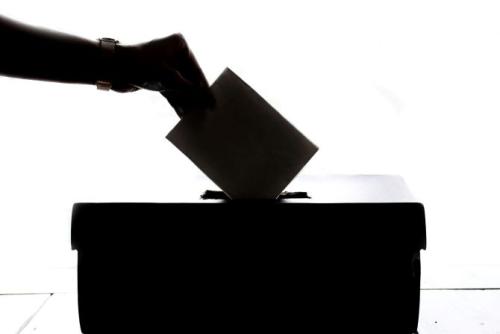Bullying behavior by top-level executives can hurt more than just feelings
The disparaging and sometimes abusive behavior of top executives is putting businesses and corporate reputations at risk more than most people realize. At one well-known, well-respected company, an executive on the transactions team didn’t raise a question he had about a $2 billion acquisition out of fear of being embarrassed by the CEO, who was known for being dismissive and verbally abusive.
When a leader’s behavior is demeaning enough that someone who ‘should have spoken up if he had the true fiduciary interest of the organization at heart’ fails to do so ‘because he didn’t want to be embarrassed or humiliated’, it creates an untenable situation, says Stephen Paskoff, president and chief executive of Atlanta-based Employment Learning Innovations (ELI), which trains managers to recognize and change uncivil workplace behavior. ELI has trained more than 2 million people in its methods, which Paskoff calls ‘behavioral and experiential’, and has a network of roughly 8,000 people in the US – and increasingly in other countries – who embrace ELI’s methods and bring them into their organizations.
Some training organizations concentrate on compliance law training from a legal perspective and others focus on professionalism and leadership but don’t address the law, according to Paskoff. ‘In our view, you cannot change behavior unless you focus on leadership and values, give people learning and link behavior across the spectrum that involves not only legal principles but also non-legal principles that link to values and business performance at the same time,’ he says.
Empirical research studies by Christine Pearson and Christine Porath, management professors at the Thunderbird School of Global Management and Georgetown University’s McDonough School of Business, respectively, find that the adverse effects incivility has on workers’ performance include reduced concentration and ability to learn new tasks, less willingness to
help fellow employees, less inclination to act in the company’s best interests, and lower creativity as reflected in things like brainstorming new ideas.
‘As stress [fueled by incivility] increases, employees become less capable, because stress disrupts memory and hampers the processing of information,’ Pearson and Porath write in their 2009 book The cost of bad behavior: how incivility is damaging your business and what to do about it.
Fighting fires
Pearson and Porath were also surprised by the extent to which leaders’ time and effort went into managing the effects of incivility. In their book, they cite an Accountemps study reported in Fortune that found ‘managers and executives of Fortune 1000 firms spend as much as 13 percent of their total work time – seven full weeks per year – mending employee relationships and replacing workers who just can’t or won’t take it anymore.’
Despite this, the reduced employee engagement and lost productivity that result from incivility typically fly under the board of directors’ radar because the kinds of behavior to which such problems can often be traced haven’t yet risen to the legal threshold or aren’t viewed as a compliance issue.
Uncivil behavior at work may not remain below boards’ radar for much longer, however. In June, Tennessee became the first state to pass a Healthy Workplaces Bill to combat bullying, though it applies only to state and local government employees. A similar bill was recently defeated in Puerto Rico, while 25 states besides Tennessee have introduced a version of anti-bullying legislation since 2010. The impetus for that has been growing acknowledgement of the need for a law separate from anti-discrimination laws to address less overt behavior that doesn’t rise to the level of formal discrimination or harassment.
Warning signs
Knowing how to recognize early warning signs of incivility can help a company gauge the right time to initiate civility training. Ralph de Chabert, chief diversity officer at Brown-Forman, whose brands include Jack Daniels and Southern Comfort, decided to invite ELI in when he noticed occasional jokes or banter based on gender or race.
‘I thought, you never know if this could be a slippery slope,’ he recalls. ‘I knew from experience with this material before [at my previous company] that these were no-nos. The whole idea of helping managers document events for which there are
performance issues is a good business practice. It’s very good that you’re not pulling together loose pieces of paper and trying to remember what happened later [after a serious incident occurs].’
De Chabert credits ELI’s training with helping managers recognize their tendency toward certain kinds of incivility before they get into trouble. One manager told de Chabert he had never seen himself as a bully, but based on the training he understood how others might view him as one.
‘It allows you to vicariously experience what could happen in certain situations without being the individual [charged with misbehavior],’ de Chabert says. ‘Some people sit there and are awed because they recognize that they’ve been there. They get it on an emotional level. You allow people to see the possibilities and they don’t have to experience it directly. That’s very proactive.’
Not everyone is a fan, though. Sharon Parella, a partner at Morrison Foerster who leads the law firm’s Advance@Work
program, doubts the efficacy of trying to help employees change their behavior, through training or otherwise. ‘Instead of changing the individual, change the culture and attract people who belong in that new culture or share that cultural view, and exclude those who don’t,’ she advises.
Parella has seen higher employee engagement at companies investing in creating a culture that clarifies the kind of behavior that gets rewarded or punished, and the kind that won’t be tolerated. Establishing an ethical culture makes employees ‘have greater trust that their company is a place they may want to spend more of their careers,’ she explains. ‘When there are no rules, staff are insecure and floundering and don’t know how to read the signals.’
Slow take-up
Just 11 percent of organizations studied by Pearson and Porath say they take civility into account when hiring someone, and many of those do so hastily, according to an article by the two professors published in the January- February 2013 Harvard Business Review. Uncivil behavior ‘usually leaves a trail of some sort, which can be uncovered by anyone willing to look,’ the article reports.
For Roy Snell, CEO of the Society of Corporate Compliance and Ethics, ‘the quickest way to build a good culture or civil workplace’ is to implement an effective compliance program, which he feels helps a company attract and retain the best people.
‘It’s not a legal issue; it’s a management issue,’ Snell says. ‘But herein lies the beauty of a compliance program: if you out the people who are acting improperly, you set a tone that creates a ripple effect, and the ripple effect is civility.’ The opposite holds true, too, Snell explains: people being rude, mean or spiteful tend to encourage more of the same.
De Chabert sees civility training as part of a workplace culture that supports his diversity work. It helps ‘create an environment where everyone can bring his or her best self to the workplace and maximize his/her contribution,’ he points out.
‘When you’re struggling with questions like how do people see me, how do I fit in, do I look different, this training helps managers realize that they set the tone. These things can be problematic when trying to establish an environment of bringing people’s best selves to the workplace.’
Raising awareness
In addition to changing behavior, training raises managers’ awareness of the need to guard against the appearance of conflicts of interest and actions that might otherwise be misinterpreted.
‘There are certain things you can’t do at certain times because of other actions you’re taking, because it might look like retaliation,’ de Chabert says. For example, if a manager hasn’t set in motion long-contemplated shifts in responsibility within his department before an employee with certain duties takes maternity leave, he needs to wait until after that employee returns to work to avoid the appearance of changes being related in any way to the maternity leave.
The training has made managers at Brown-Forman ‘much more mindful about what they’re doing in the organization,’ de Chabert notes. ‘It’s getting managers to think beyond their immediate needs and see things in a much larger context,’ he adds.
Paskoff sees a need for employee behavior to be viewed more broadly as a business issue, rather than an HR-driven initiative. ‘You want leaders to say, I’m concerned about behaviors because they affect productivity, safety, quality, business results, money, branding, reputation on the Street, and the like,’ he says. ‘You have to be able to show them the link between behavior and the cost to the organization.’
In their Harvard Business Review article, Pearson and Porath cite estimates by firms they have worked with that put the cost of incivility at millions of dollars. Cisco, for example, calculated a potential cost of $12 million per year, despite its reputation as a superior place to work and the assumption of a very low probability of discourtesy among employees. That calculation motivated Cisco to create a global workplace civility program, according to the article.
Still, some organizations are reluctant to roll out a civil treatment training program for their employees out of fear it will teach staff how to hold their employer hostage over certain things, says de Chabert. Brown-Forman addresses such concerns by first helping managers understand how to behave appropriately with employees and then teaching the employees about the kind of treatment they are entitled to at work.
‘There’s a system of accountability in place,’ de Chabert says. ‘When a complaint surfaces we can tell if the employee has gone through civil treatment training because of the language he/she uses. That allows us to see whether the training is working.’
Paskoff recommends that adjusting behavior be seen essentially as an improvement to a business process. That starts with top leaders embracing the issue as their own imperative and setting a cultural standard for the company.
‘Many organizations have initiatives that deal with behavior – senior leaders have to talk about it, not through a video once a year, but all the time,’ says Paskoff, pointing to Georgia Power’s practice of starting each meeting with a brief safety talk. ‘They have to be willing to hold people accountable consistently for core behaviors. If they don’t, they’re just not serious about it.’








